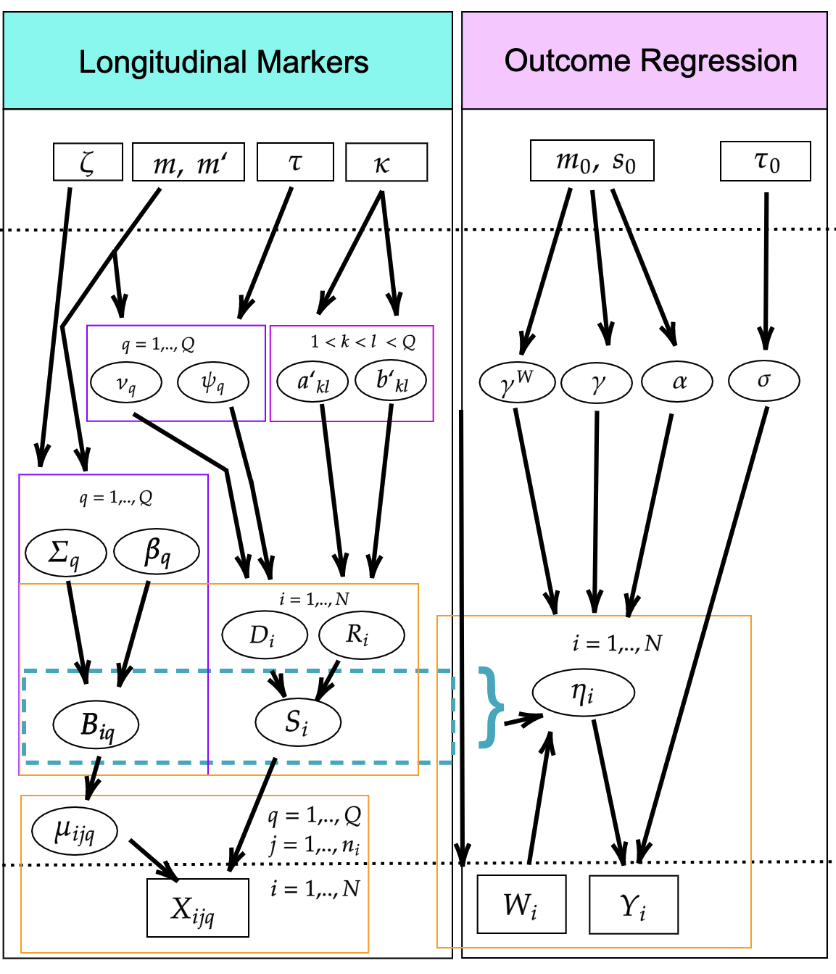Abstract
Longitudinal biomarker data and cross-sectional outcomes are routinely collected in modern epidemiology studies, often with the goal of informing tailored early intervention decisions. For example, hormones such as oestradiol (E2) and follicle-stimulating hormone (FSH)may predict changes in women’s health during the midlife. Most existing methods focus on constructing predictors from mean marker trajectories. However, subject-level biomarker variability may also provide critical information about disease risks and health outcomes.In this paper, we develop a joint model that estimates subject-level means and variances of longitudinal predictors to predict a cross-sectional health outcome. Simulations demonstrate excellent recovery of true model parameters. The proposed method provides less biased and more efficient estimates, relative to alternative approaches that either ignore subject-level differences in variances or perform two-stage estimation where estimated marker variances are treated as observed. Analyses of women’s health data reveal that larger variability of E2 and higher mean levels of E2 and FSH are associated with higher levels of fat mass change.
Keywords Estradiol; Follicle-stimulating hormone; Hamiltonian Monte Carlo; Joint models; Subject-level variability; Study of Women’s Health Across the Nation (SWAN); Variance component priors
